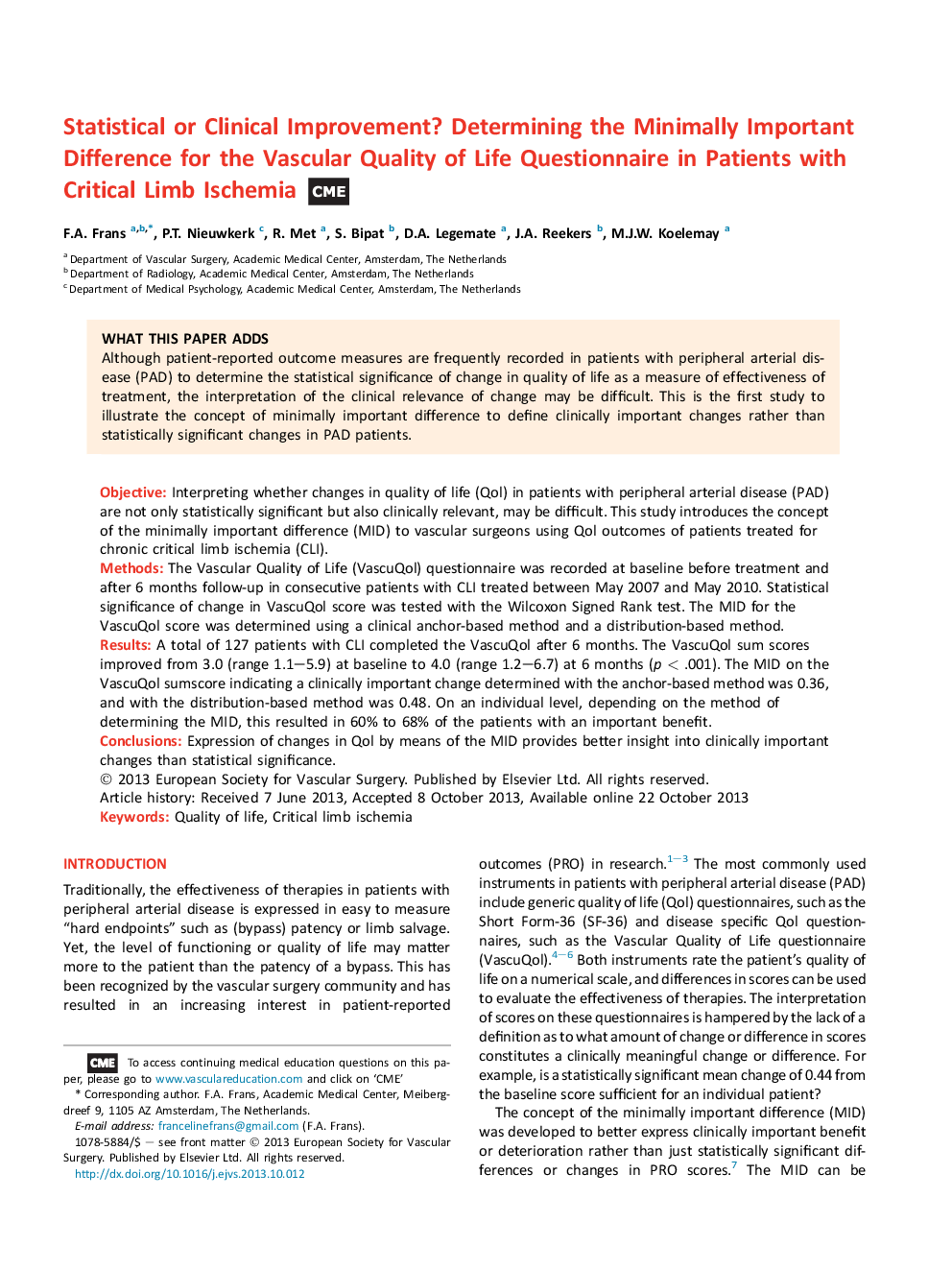| Article ID | Journal | Published Year | Pages | File Type |
|---|---|---|---|---|
| 5958516 | European Journal of Vascular and Endovascular Surgery | 2014 | 7 Pages |
ObjectiveInterpreting whether changes in quality of life (Qol) in patients with peripheral arterial disease (PAD) are not only statistically significant but also clinically relevant, may be difficult. This study introduces the concept of the minimally important difference (MID) to vascular surgeons using Qol outcomes of patients treated for chronic critical limb ischemia (CLI).MethodsThe Vascular Quality of Life (VascuQol) questionnaire was recorded at baseline before treatment and after 6 months follow-up in consecutive patients with CLI treated between May 2007 and May 2010. Statistical significance of change in VascuQol score was tested with the Wilcoxon Signed Rank test. The MID for the VascuQol score was determined using a clinical anchor-based method and a distribution-based method.ResultsA total of 127 patients with CLI completed the VascuQol after 6 months. The VascuQol sum scores improved from 3.0 (range 1.1-5.9) at baseline to 4.0 (range 1.2-6.7) at 6 months (p < .001). The MID on the VascuQol sumscore indicating a clinically important change determined with the anchor-based method was 0.36, and with the distribution-based method was 0.48. On an individual level, depending on the method of determining the MID, this resulted in 60% to 68% of the patients with an important benefit.ConclusionsExpression of changes in Qol by means of the MID provides better insight into clinically important changes than statistical significance.
